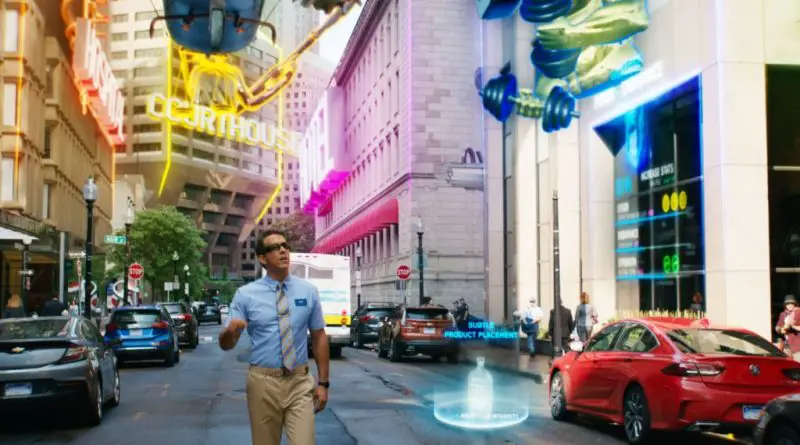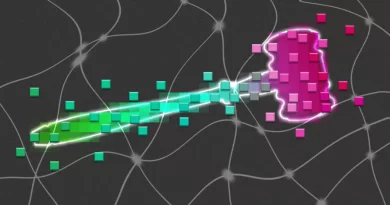How the Metaverse Infiltrates Our Lives and the Environment
Metaverse could be built on blockchain technology, and metaverse functions and transactions necessitate a high level of security and speed. For example, interoperable video game technology allows users to transfer 3D digital environment assets between games; web3 video games currently provide this capability via NFTs.
People are more concerned about the environment than ever before. According to a Gallup poll conducted in April, between 59% and 89% of Americans supported every proposed federal initiative to help the environment. However, many people are unconcerned about some major changes that could harm the planet. This includes technological advancements such as the metaverse.
We rarely consider all of the factors that influence our lives and the planet we live on. As more people become concerned about sustainability, they are only now beginning to consider ways to reduce their carbon footprint. The metaverse is one trend that is having an unexpected impact on the planet.
As an environmentally conscious consumer, you will want to consider the metaverse’s impact on the planet. Of course, you should consider the ways in which it affects our lives. It exemplifies how technology can either destroy or save the planet.
What Is the Metaverse and How Does It Affect the World?
Although the term “metaverse” has gained popularity in recent years, thanks in part to Facebook, the concept is not new. Since the late 1970s and early 1980s, many in the technology world have predicted a future form of the internet known as the “metaverse.” Despite the fact that the entire metaverse and nft explained is difficult to explain, appears outlandish, and is decades away, many elements have begun to feel very real. The journey is as long and unexpected as the payoff in this type of transformation. The metaverse is three-dimensional and multisensory, whereas the internet is two-dimensional, consisting of text and images displayed on flat screens.
But what exactly is the metaverse, and what does it represent in everyday life? More importantly, how does the metaverse affect the environment? This is a critical question for environmentally conscious citizens to answer. Before discussing the impact of the metaverse on the planet, we will look at how it has changed our daily lives.
What Is the Metaverse?
A unified and interoperable virtual environment in which users can interact with one another and the 3D digital environment using technology. The metaverse is not entirely new; rather, it is a natural extension of current virtual reality technological advances. The core technology of the metaverse is extended reality (XR), which includes virtual reality (VR), augmented reality (AR), and mixed reality (MR). The metaverse is essentially a product or service with fundamental properties such as synchronization and interoperability.
It is critical to understand that the metaverse and blockchain are not synonymous. A metaverse does not require the use of blockchain technology. The operations and transactions carried out in the metaverse, on the other hand, require a high level of security and speed, which blockchain provides best. By deploying non-fungible tokens, a metaverse can use blockchain technology and crypto assets to validate evidence of ownership of 3D digital environment assets in both the virtual and real worlds (NFTs).
Some Businesses Are Already Using Metaverse
In the game industry, the metaverse is already being used to allow players to interact with one another and with the 3D digital environment. For some time, virtual reality gaming has been available as a separate program that can be loaded onto a desktop computer, virtual reality headset, or mobile phone to play video games. Thanks to advanced human-to-computer interface technology and software, the in-game experience can now be seen in a 3D virtual reality metaverse that can be viewed in 360°. Thanks to technology that connects multiple games to a single interoperable environment, users may be able to navigate with the same players in multiple physical areas. The metaverse is already being used by game companies such as Decentraland, Sandbox, Epic Games, and Meta.
Given these characteristics, it’s not surprising that the sports industry is also venturing into the metaverse. The metaverse can enhance sports viewing experiences through immersive features. Fans may virtually attend a game rather than simply watching a team play on a screen. Technology may also change how people participate in sports. Consider boxing: spectators may enter the ring to compete against a computer-generated opponent. Multiview and simultaneous playback technologies can also be used, providing athletes and viewers with additional options.
Fashion is a third industry where the metaverse is invading. Among the brands that have undertaken metaverse projects are Ralph Lauren, Gucci, Tommy Hilfiger, Nike, and Fendi. Balenciaga, for example, debuted a Fortnite collection featuring characters dressed in hoodies, all of which could be purchased with the game’s virtual currency. Emerging fashion labels are also venturing into the metaverse, with some designers releasing customizable avatars. Buyers may be drawn to this digital fashion because of its creative value, the possibility of a price increase, and the desire to display it to others.
The Metaverse’s NFTs
As previously stated, the metaverse could be built on blockchain technology, and metaverse functions and transactions necessitate a high level of security and speed. For example, interoperable video game technology allows users to transfer 3D digital environment assets between games; web3 video games currently provide this capability via NFTs. For example, the Sandbox crypto metaverse video game is based on user-generated NFTs that can be purchased and merged into a virtual world. NFTs can also be used to verify participation in virtual teams or leagues in sports. And, as Dolce & Gabbana’s Alta Moda presentation did last September, some metaverse apparel collections are being linked to NFTs.
Real Estate and E-Commerce Will Follow
Following Facebook’s announcement on October 28 that it would rebrand as Meta to focus on the metaverse, there was a rush to acquire metaverse real estate. Sandbox, Decentraland, Cryptovoxels, and Somnium dominated the virtual real estate market in November, with sales increasing ninefold to $133 million. Metaverse real estate sales will exceed $500 million in 2021. The metaverse real estate market would grow at a compound annual rate of 31% between 2022 and 2028, according to BrandEssence Market Research. Simultaneously, numerous questions about the metaverse’s real estate pricing, sustainability, and long-term prospects remain.
The metaverse will have a significant impact on e-commerce by allowing customers to have more personalized purchasing experiences. Using their avatars, online buyers may be able to communicate with other users and interact with products. Customers may also be able to customize their own products in digital marketplaces. In general, the metaverse may offer a more immersive purchasing experience.
How Does the Metaverse Impact the Earth?
If you are truly concerned about sustainability, you must consider how technological trends such as the metaverse affect the planet. The metaverse is no different. The World Economic Forum’s Lizzy Rosenberg shared some insights based on new research on the subject. She stated that experts are concerned that the metaverse will generate massive greenhouse emissions due to its reliance on cloud computing and AI. These technologies require massive amounts of energy, which leaves a significant carbon footprint.
The good news is that there are some solutions to reduce the metaverse’s carbon footprint. Rosenberg’s three options are as follows:
- SD video streaming
- Buying secondhand electronics
- Finding efficient methods of recycling e-waste
Fortunately, the metaverse can help us reduce our carbon footprint in other ways as well. This includes reducing our reliance on certain physical goods with high carbon footprints.
The question, “Is the metaverse bad for the environment?” cannot yet be answered. The verdict is still out because technology is evolving and has both positive and negative consequences. The Metaverse Has a Big Impact on Our Lives and the Planet Technology has the power to change the world and our lives in complex ways. The metaverse is an excellent example.
People in the metaverse virtual environment would be able to do almost anything they could do in the real world. As a result, we can speculate that the metaverse will have a broad impact on our lives, influencing everything from future businesses to social activities to everyday human relationships. The metaverse has a complicated impact on the planet as well.
The metaverse’s future reality is taking shape, but it isn’t quite ready yet. It’s only a matter of time before we find out what this new frontier has in store for us.




